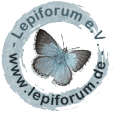

 +1Kontinente:AS
+1Kontinente:AS2. Weitere Informationen
2.1. Synonyme
- Aporia belucha pseudoillumina Tshikolovets, 2021 [synonymisiert durch Nazari et al. (2024)]
2.2. Taxonomie und Faunistik
Nazari et al. (2024) studierten die Genetik der Aporia-Falter in den Hochlagen des nördlichen Iran und stellten dabei fest, dass die bisher unter "Aporia leucodice ssp. illumina Grum-Grshimailo, 1890" und "Aporia belucha ssp. pseudoillumina Tshikolovets 2021" gemeldeten Tiere aus dem Aporia leucodice-Komplex weder zu Aporia leucodice noch zu Aporia belucha passten. Sie beschrieben eine neue Art (Aporia ahura) für die Tiere aus den Bergen des mittleren Alborz und werteten das Taxon illumina - mit den Tieren im Iran östlich davon - zur Art auf.
Sie stellten fest: "The fact that Northern Iranian lineages in this group are sister to the nominotypical Central Asian A. leucodice with high support invalidates their association with A. belucha (i.e. [13]). The UNH wing pattern and the genitalia of the dissected specimens from the two populations in N and NE Iran showed clear differences from the Central Asian A. leucodice and all other species in this group (Figs. 3 and 4). [...] Taking all of the information above into account, here we assign the rank of species to the two populations in N and NE Iran and formally separate them from A. leucodice. The name illumina Grum-Grshimailo (1890) is available for one of these populations. In describing “var. illumina”, Grigory Grum-Grshimailo gave the following type localities: “la forme plus foncée, habitant les pentes septentrionales du Thian-Chan, des monts Alaï et la partie septentrionale de la Perse montagneuse”". Die Wahl eines Lectotypus ausgerechnet aus dem Iran, wo Grum-Grshimailo nie selbst gesammelt hatte, begründen sie vor allem damit, dass sie von den anderen Regionen gar keine Syntypen fanden, weiter vor allem damit, dass die allermeisten Publikationen, den Namen "ssp. illumina" auf genau diese Tiere aus demnordöstlichen Iran beschränkten. Ähnlich aussehende Tiere aus anderen Regionen benötigen also einen anderen Namen, wenn man diese individuellen oder regionalen Formen überhaupt benennen will.
Nazari et al. (2024) bemerken: "The type locality of Aporia illumina stat. nov. includes the eastern Alborz mountains, i.e. Shahkuh, “Hyrcania”, “Hadschyabad” [= Gorgan], “Tasch” etc. Therefore, the population from Shahkuh appear to represent the nominotypical taxon illumina. Specimens from Kuh-e Sorkh in Northern Khorasan also belong to illumina. However, since our single specimen from Kopet-Dagh was found to be mislabelled, the genetic affiliation of the populations from Kopet-Dagh remains to be confirmed."
(Autor: Erwin Rennwald)
2.3. Literatur
- Erstbeschreibung: Groum-Grshimaïlo, G. (1890): Le Pamir et sa faune lépidoptérologique. — Mémoires sur les lépidoptères 4: 1-576, pl. I-XXI. St.-Pétersbourg (M. M. Stassulewitsch).
- Nazari, V., Lukhtanov, V., Naderi, A., Della Bruna, C., Zahiri, R., Cesaroni, D., Sbordoni, V. & V. Todisco (2024): COI Barcodes combined with multilocus data for representative Aporia taxa shed light on speciation in the high altitude Irano-Turanian mountain plateaus (Lepidoptera: Pieridae). — BMC Ecology and Evolution, 24 (105): 1-13. [zum open-access-Artikel auf bmcecolevol.biomedcentral.com]



